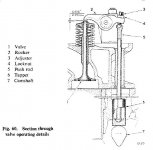Lukens
Jedi Warrior
Offline
After re-torquing my head yesterday I of course had to reset my valve clearances. I use the "rule of nine" Even though I remove the plugs and loosen the fan belt, I've never been able to turn the crank by pulling/pushing on the fan blades. I always resort to bumping the starter with the solenoid until I "hope" I'm on top of a lobe. Gets me close but... What do you guys do?
Russ
Russ

 Hi Guest!
Hi Guest!

 smilie in place of the real @
smilie in place of the real @
 Pretty Please - add it to our Events forum(s) and add to the calendar! >>
Pretty Please - add it to our Events forum(s) and add to the calendar! >> 

